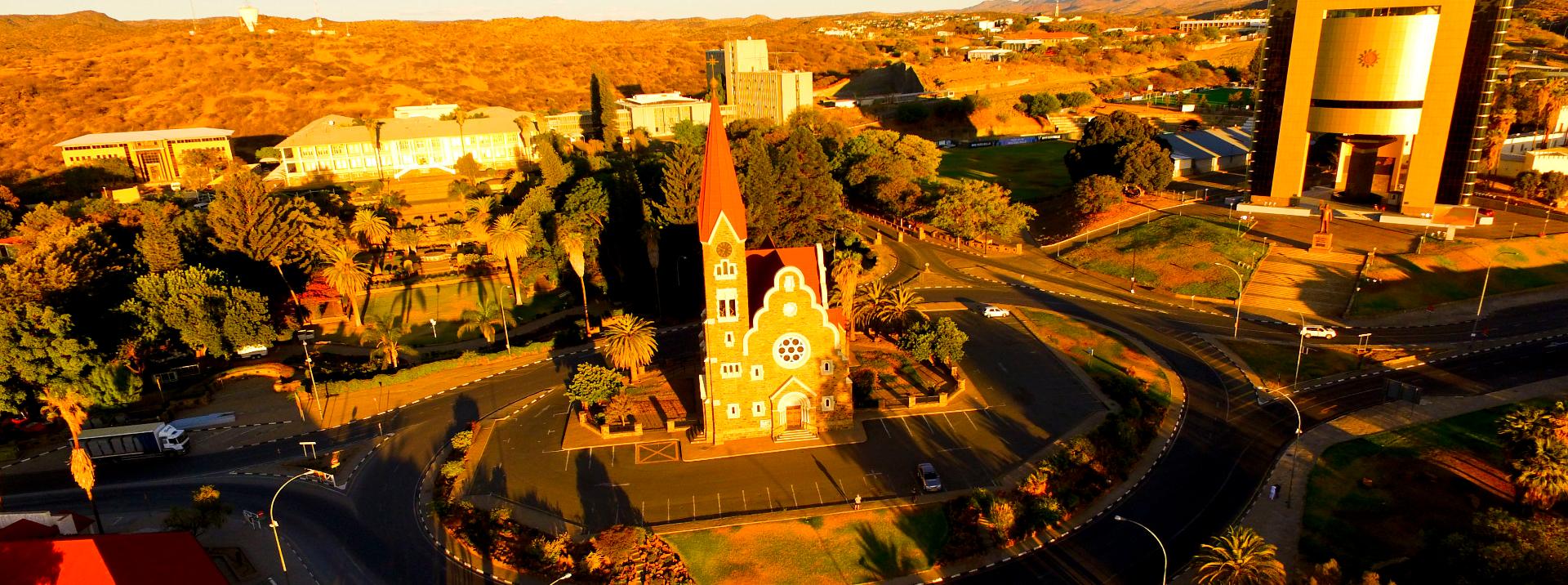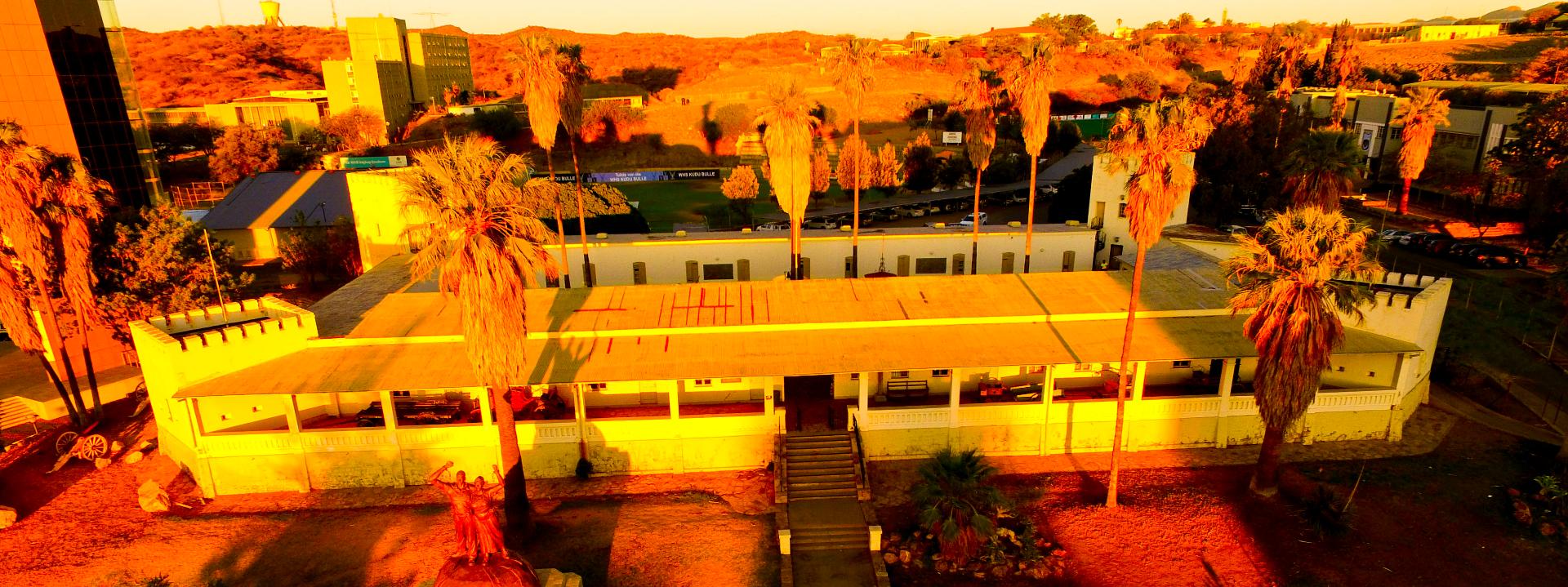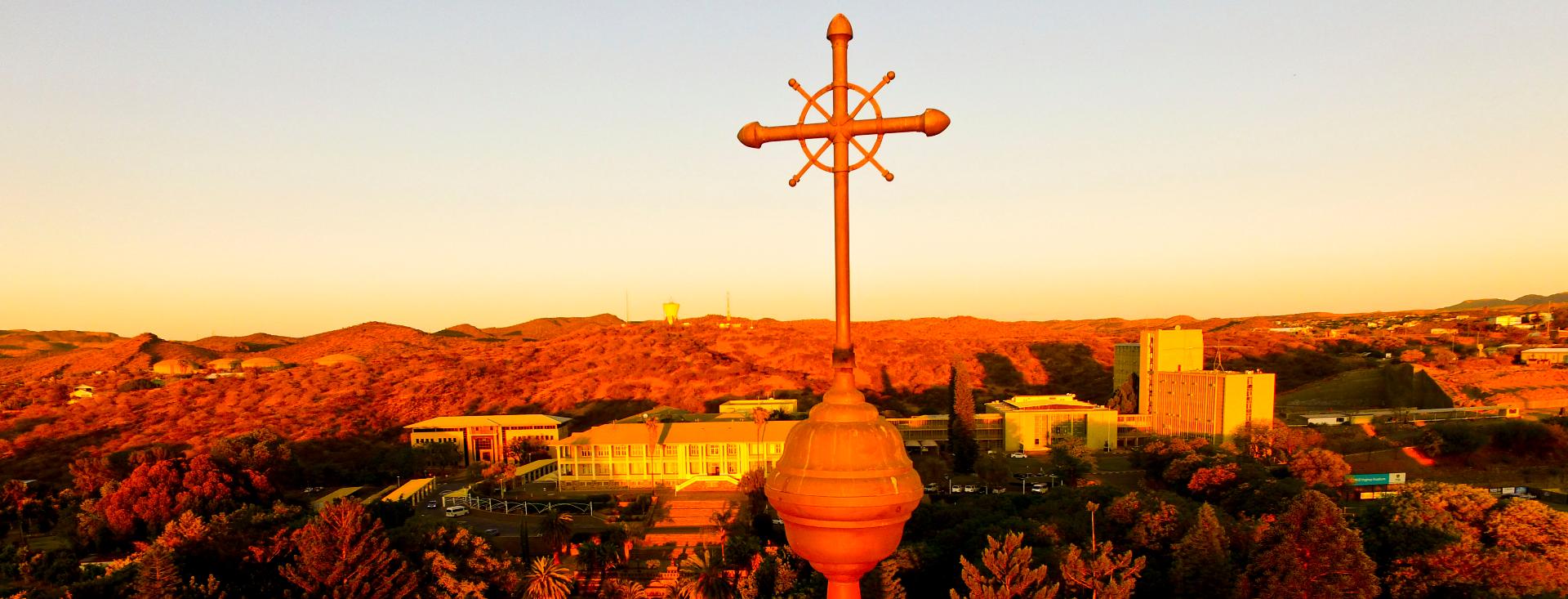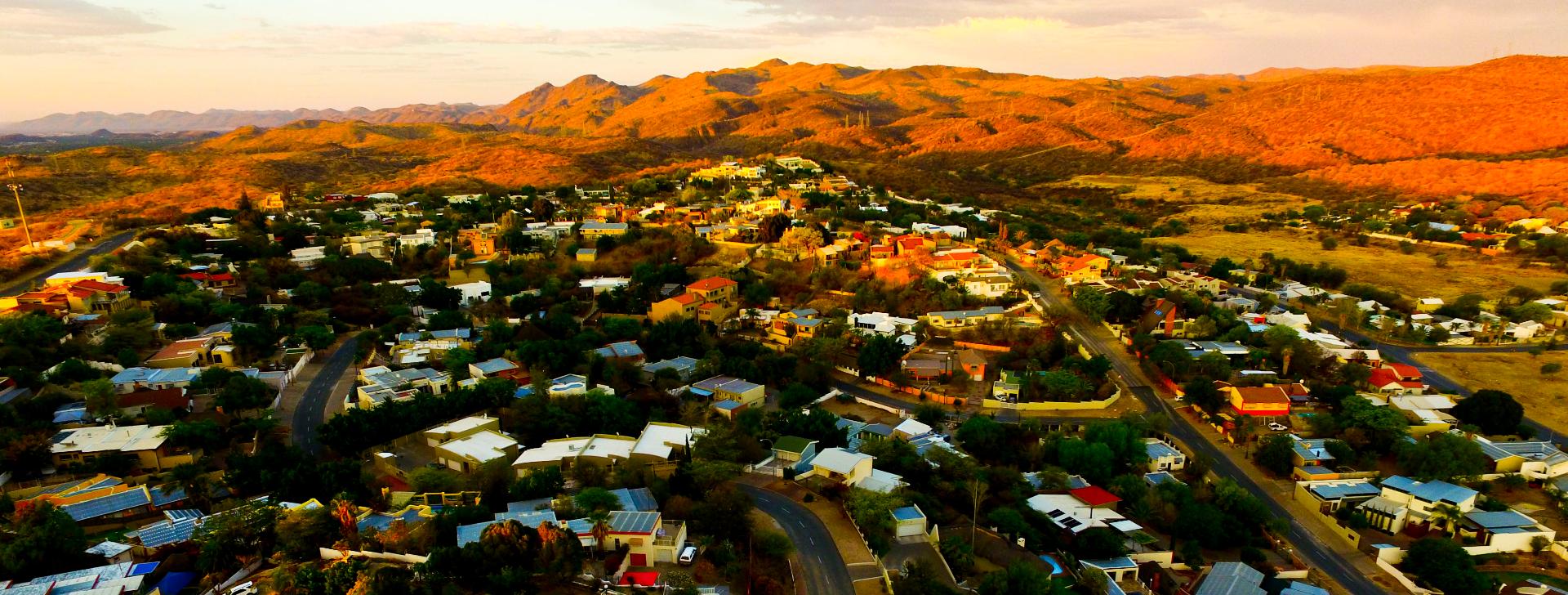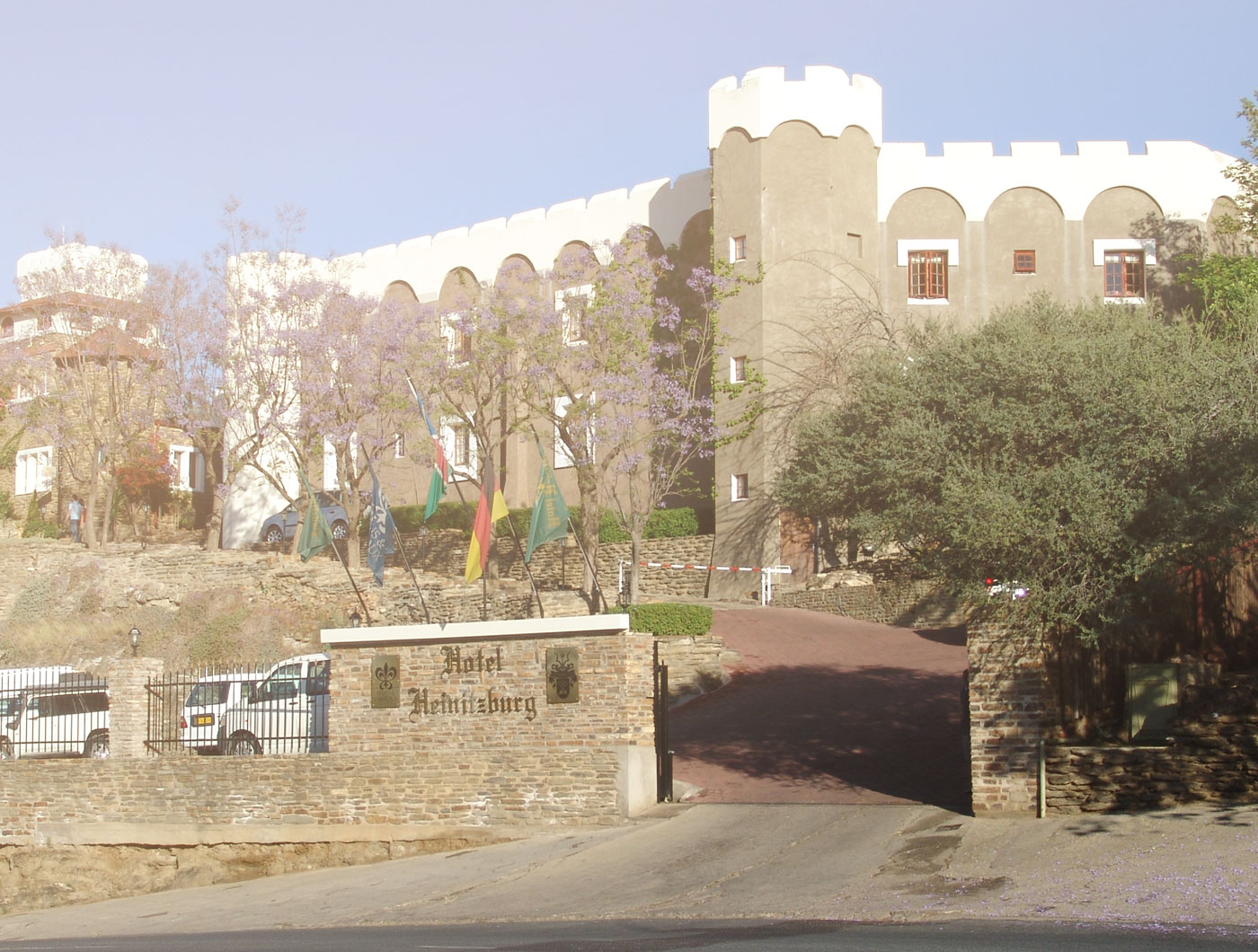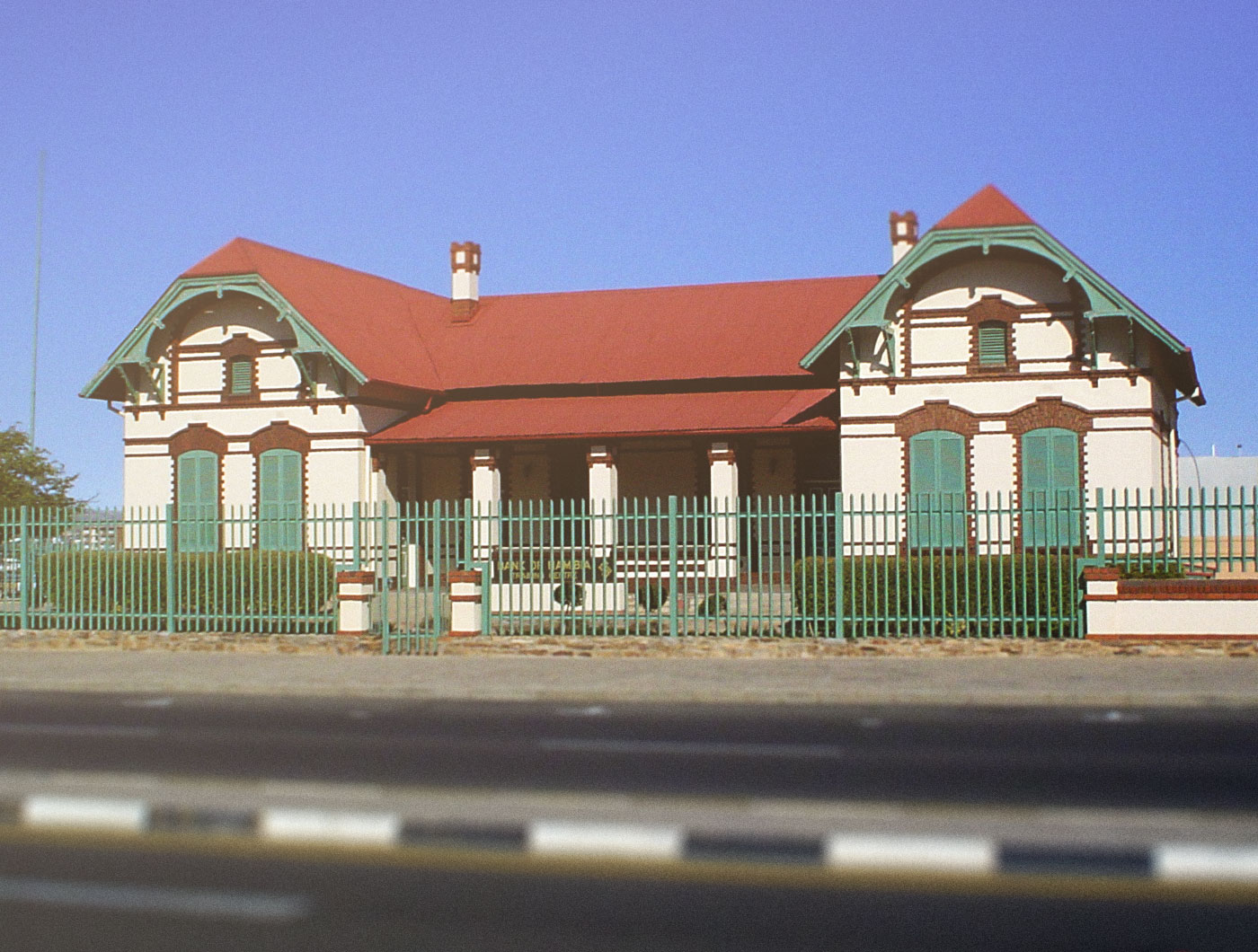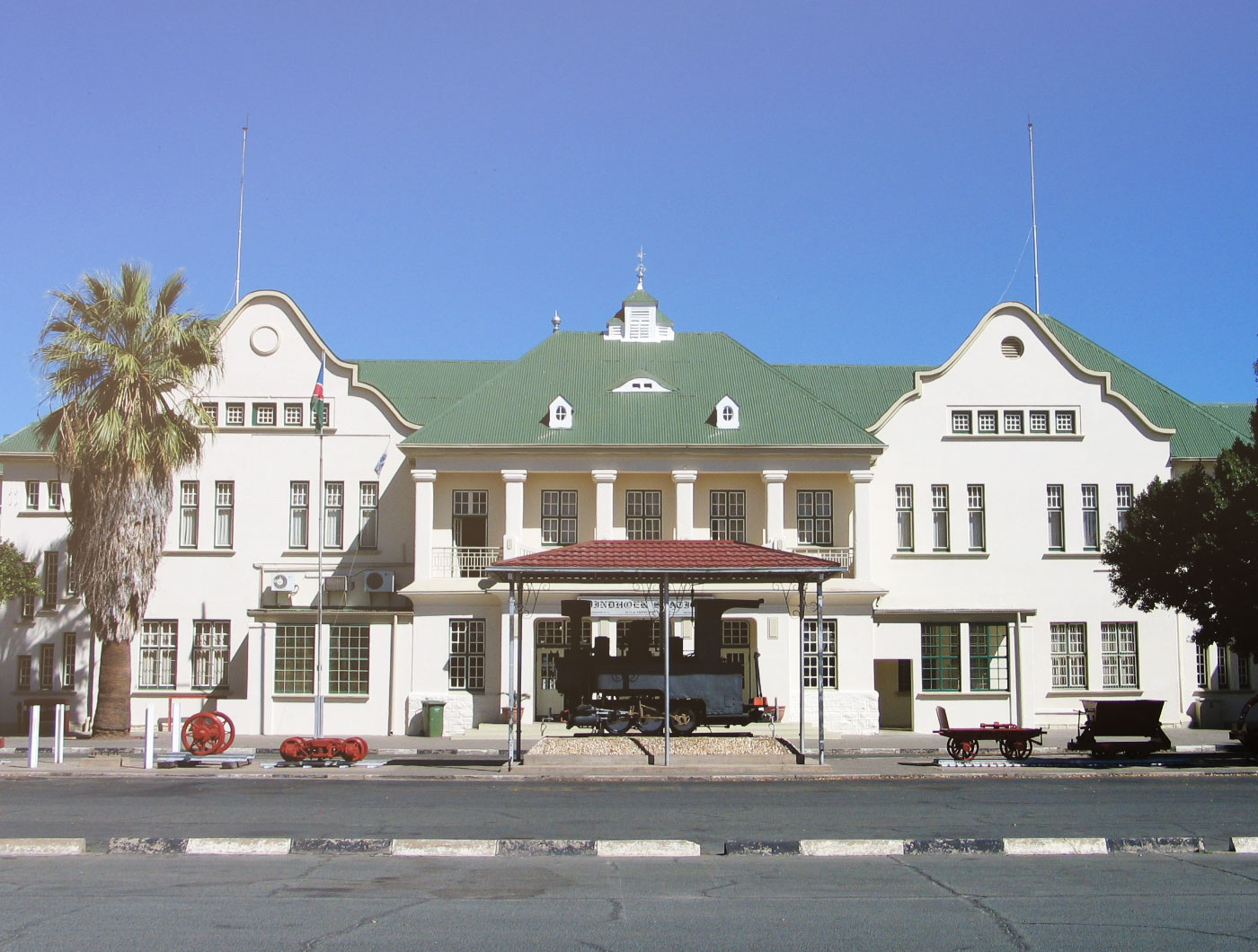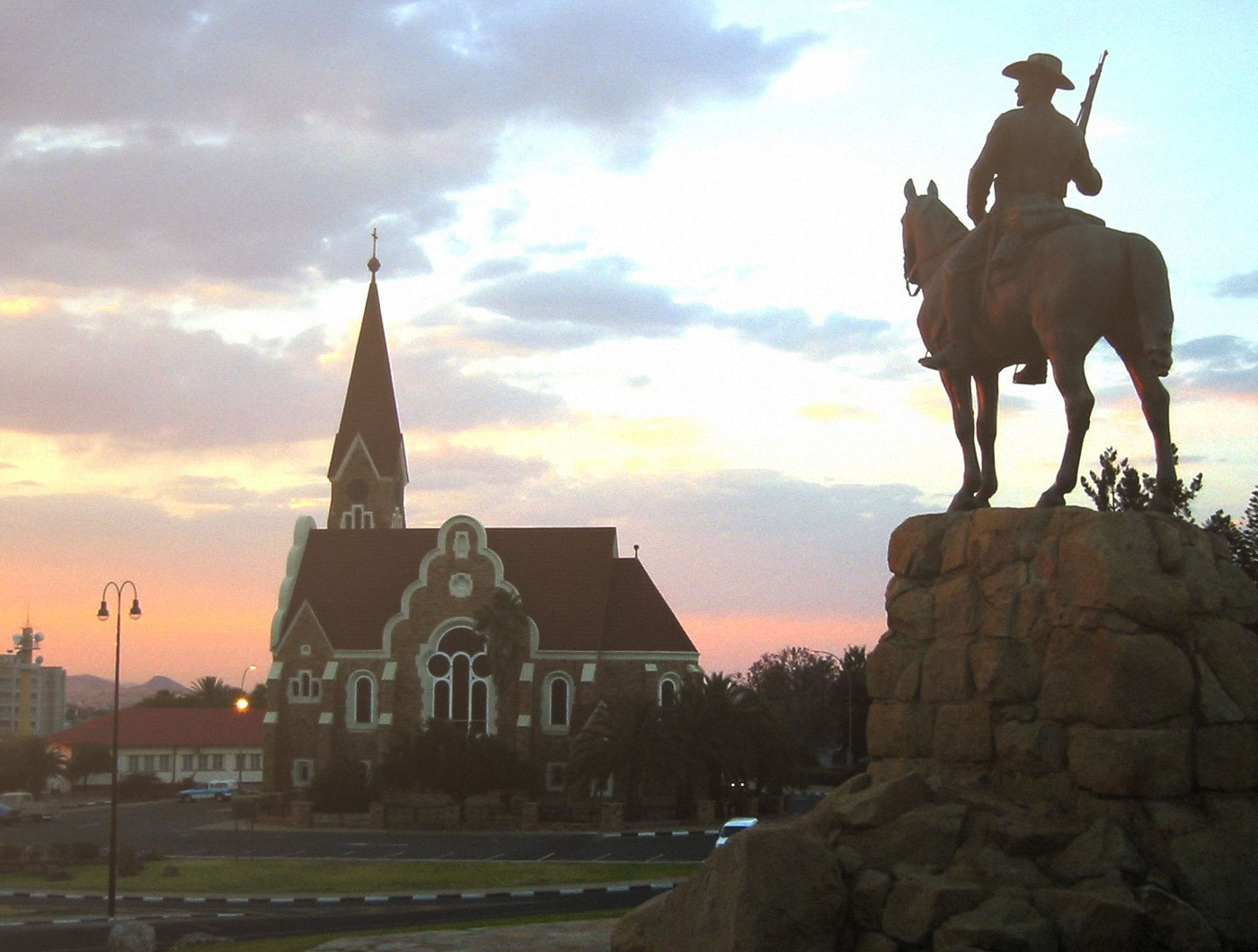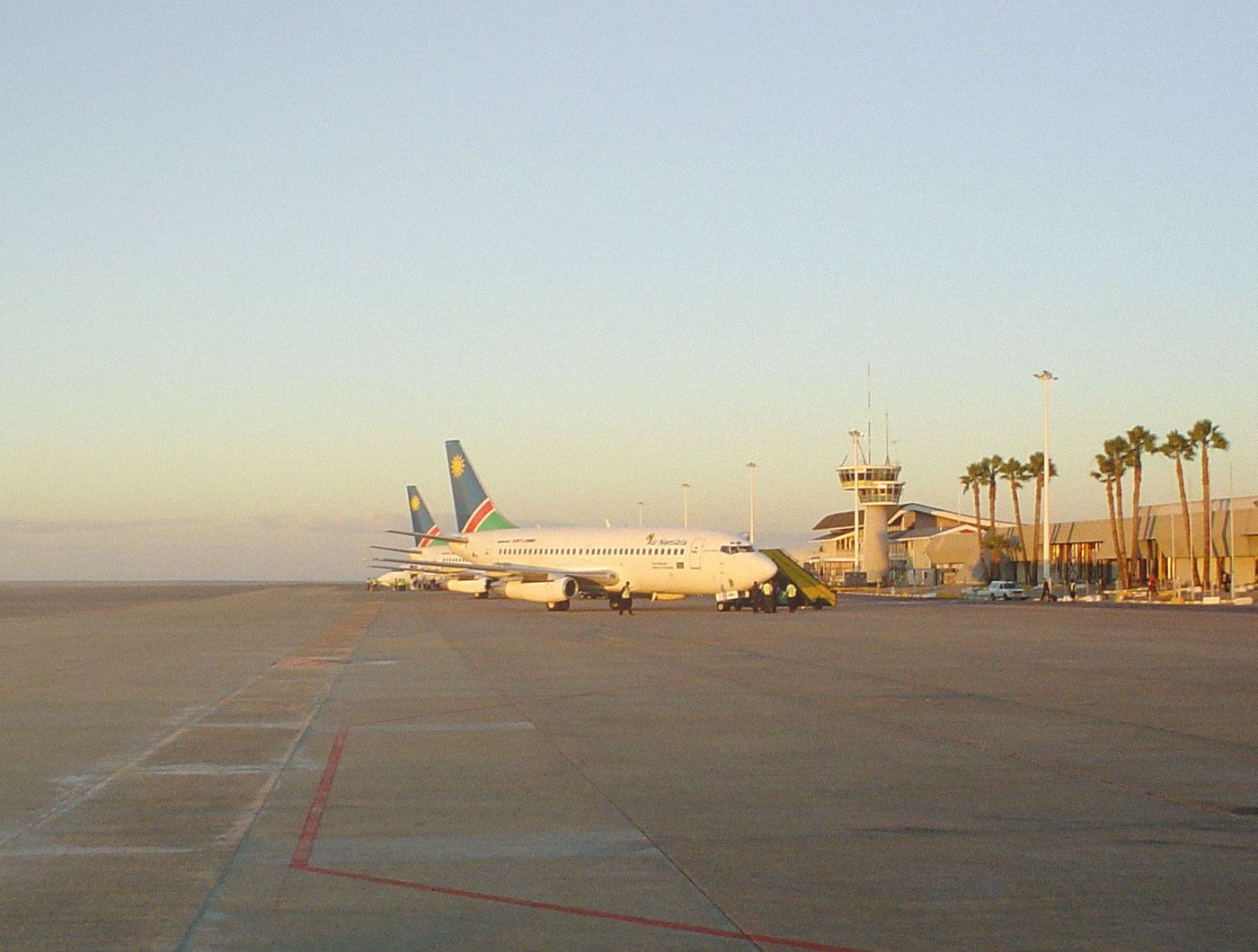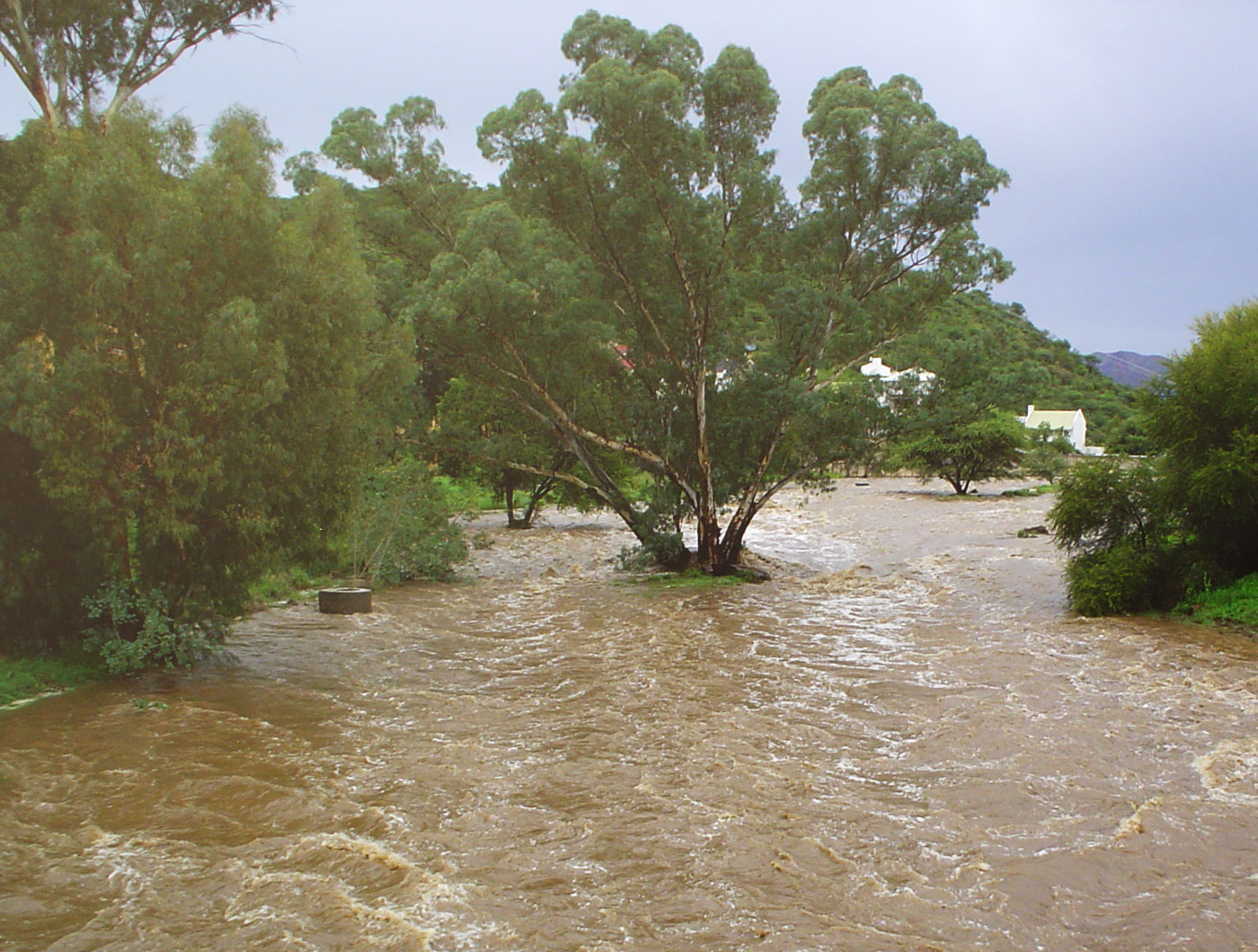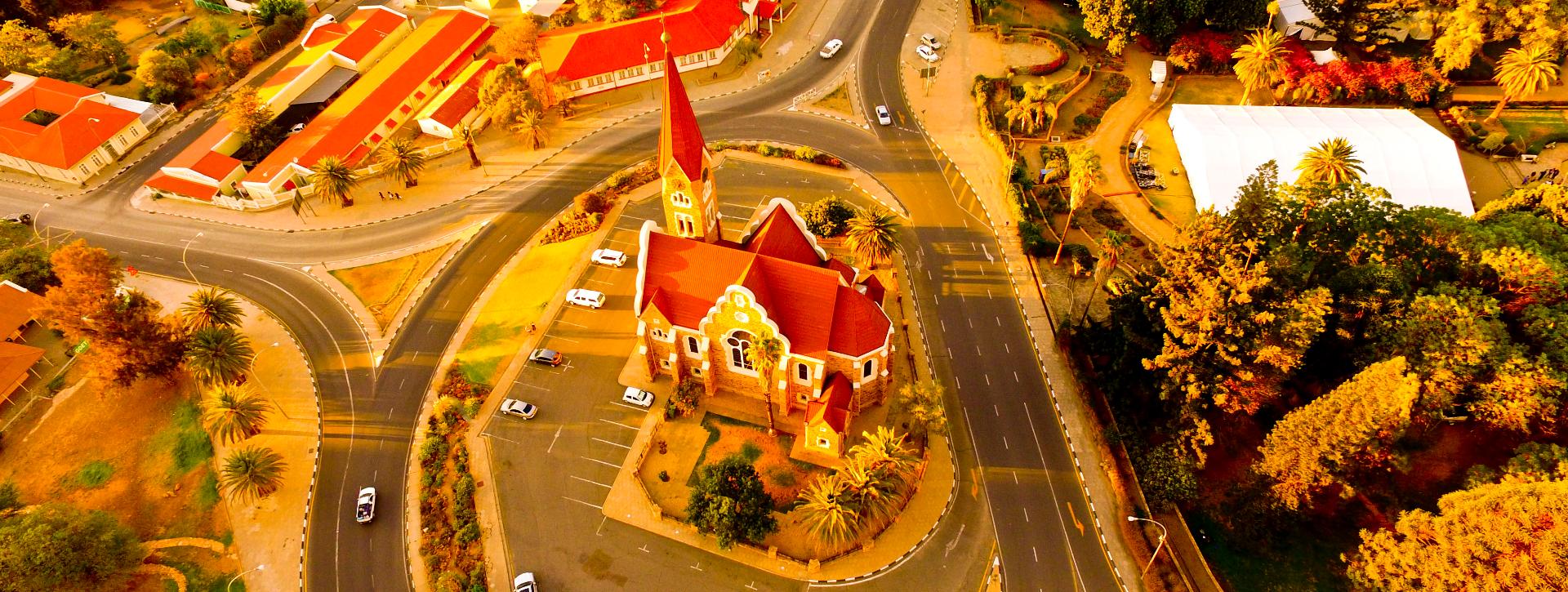 Windhoek
Windhoek
Windhoek
Windhoek, the capital of Namibia, was founded in the valley that was most likely the bowl of the prehistoric lake which was proven by the vegetation layer found during the construction of the Sanlam building. Typical bottom of the lake deposits were found at the depth of 15 metres.
Name. Nama called Windhoek Aigams (''Hot water'' because of hot springs of Windhoek) and Herero used name Otjimuise (''Place of smoke'') but it was Nama's chief Jonker Afrikaner who gave the town its present name - '' windy corner''. There are two versions for the origin of the name: windy place (only 28% calm days a year) and name of farm Winterhoek in the Cape where Afrikaner's family originally was from.
Windhoek climate makes it a very nice place to live in: mostly dry but with a quite reliable rainfall with an average of 360 mm a year. Another reason for establishing a settlement here were several fountains with good healthy water. German colonists found morass in the Windhoek's valley that they drained later. Windhoek's altitude is around 1650 m above sea level (railway station: 1642 m, International airport: 1680-1720 m, Ausspanplatz: 1650 m). The highest mountain around the capital is Grossherzog at 2330 m above sea level (south of Windhoek on the way to Rehoboth with TV tower on top). .
The settlement was founded in 1840 by Jonker Afrikaner who built his first house next to present South African High Commission (previously Berg hotel). For a long time Windhoek was a small settlement abandoned from time to time during Nama-Herero wars. 18 October 1890 Curt von Francois reached Windhoek with 32 men and commenced construction of Alte Feste establishing permanent German presence. Shortly after small fort was erected which forms part of Schwerinsburg castle now.
 LodgesNamibia offers all accommodation options: from budget/backpackers to five star hotels/lodges
Lodges
LodgesNamibia offers all accommodation options: from budget/backpackers to five star hotels/lodges
Lodges
 SafarisNamibia offers all accommodation options: from budget/backpackers to five star hotels/lodges
Safaris
SafarisNamibia offers all accommodation options: from budget/backpackers to five star hotels/lodges
Safaris
 Self-drive toursNamibia offers all accommodation options: from budget/backpackers to five star hotels/lodges
Self-drive tours
Self-drive toursNamibia offers all accommodation options: from budget/backpackers to five star hotels/lodges
Self-drive tours
